Carbon Fiber Prepreg Composites Failure Mechanism Based on Electrical Resistance Method during Hight-Strain Rate Loading
Abstract
:1. Introduction
2. High-Speed Impact Test
2.1. Principles and Requirements of High-Speed Impact Test
2.2. Experimental Materials and Sample Preparation
2.3. Measurement of Resistance Signal during High-Speed Impact
3. Experimental Results and Analysis
3.1. Variation of Resistivity with the Impact Process
3.2. Analysis of the Relationship between Resistance Changes and Structural Changes during Hopkinson Impact
3.3. Correspondence between Stress Wave Propagation and Resistivity
3.4. Stress-Strain Curve Analysis
4. Conclusions
Author Contributions
Funding
Institutional Review Board Statement
Informed Consent Statement
Data Availability Statement
Conflicts of Interest
References
- Wiggers, H.; Ferro, O.; de Cássia Mendonça Sales, R.; Donadon, M.V. Comparison between the mechanical properties of carbon/epoxy laminates manufactured by autoclave and pressurized prepreg. Polym. Compos. 2018, 39, E2562–E2572. [Google Scholar] [CrossRef]
- Lee, D.W.; Park, B.J.; Park, S.Y.; Choi, C.H.; Song, J.I. Fabrication of High-Stiffness Fiber-Metal Laminates and Study of Their Behavior Under Low-Velocity Impact Loadings. Compos. Struct. 2018, 189, 61–69. [Google Scholar] [CrossRef]
- Nath, N.K. Optimization of Tape Winding Process Parameters to Enhance the Performance of Solid Rocket Nozzle Throat Back Up Liners using Taguchi’s Robust Design Methodology. J. Inst. Eng. 2017, 98, 479–484. [Google Scholar] [CrossRef]
- Yang, Z.; Zhang, B.; Xie, Y.; Zhang, J.; Tang, Z.; Sun, B.; Zhang, B. Research progress on fabrication technology of space mirror using carbon fiber composite. Acta Mater. Compos. Sin. 2017, 34, 1–11. [Google Scholar]
- Caminero, M.A.; Chacón, J.M.; García-Moreno, I.; Rodríguez, G.P. Impact damage resistance of 3D printed continuous fibre reinforced thermoplastic composites using fused deposition modelling. Compos. Part B Eng. 2018, 148, 93–103. [Google Scholar] [CrossRef]
- Morkavuk, S.; Köklü, U.; Bağcı, M.; Gemi, L. Cryogenic machining of carbon fiber reinforced plastic (CFRP) composites and the effects of cryogenic treatment on tensile properties: A comparative study. Compos. Part B Eng. 2018, 147, 1–11. [Google Scholar] [CrossRef]
- Hart, R.J. Electrical Resistance Based Damage Modeling of Multifunctional Carbon Fiber Reinforced Polymer Matrix Composites. Ph.D. Thesis, The University of Iowa, Iowa City, IA, USA, 2017; pp. 80–82. [Google Scholar]
- Wen, J.; Xia, Z.; Choy, F. Damage detection of carbon fiber reinforced polymer composites via electrical resistance measurement. Compos. Part B Eng. 2011, 42, 77–86. [Google Scholar] [CrossRef]
- Xia, Z.H.; Curtin, W.A. Modeling of mechanical damage detection in CFRPs via electrical resistance. Compos. Sci. Technol. 2007, 67, 1518–1529. [Google Scholar] [CrossRef]
- Todoroki, A.; Ueda, M.; Hirano, Y. Strain and Damage Monitoring of CFRP Laminates by Means of Electrical Resistance Measurement. J. Solid Mech. Mater. Eng. 2007, 1, 947–974. [Google Scholar] [CrossRef] [Green Version]
- Mirjavadi, S.S.; Forsat, M.; Barati, M.R.; Hamouda, A.S. Analysis of nonlinear vibrations of CNT-fiberglass-reinforced multi-scale truncated conical shell segments. Mech. Based Des. Struct. Mach. 2022, 50, 2067–2083. [Google Scholar] [CrossRef]
- Mirjavadi, S.S.; Forsat, M.; Barati, M.R.; Hamouda, A.S. Geometrically nonlinear vibration analysis of eccentrically stiffened porous functionally graded annular spherical shell segments. Mech. Based Des. Struct. Mach. 2022, 50, 2206–2220. [Google Scholar] [CrossRef]
- Afshari, B.M.; Mirjavadi, S.S.; Barati, M.R. Investigating nonlinear static behavior of hyperelastic plates using three-parameter hyperelastic model. Adv. Concr. Constr. 2022, 13, 377–384. [Google Scholar]
- Mirjavadi, S.S.; Afshari, B.M.; Barati, M.R.; Hamouda, A.M. Transient response of porous inhomogeneous nanobeams due to various impulsive loads based on nonlocal strain gradient elasticity. Int. J. Mech. Mater. Des. 2020, 16, 57–68. [Google Scholar] [CrossRef]
- Abry, J.C.; Bochard, S.; Chateauminois, A.; Salvia, M.; Giraud, G. Insitu detection of damage in CFRP laminates by electrical resistance measurements. Compos. Sci. Technol. 1999, 59, 925–935. [Google Scholar] [CrossRef]
- Zappalorto, M.; Carraro, P.A.; Quaresimin, M. Modelling the correlation between the electrical resistance and stiffness degradation in conductive composite laminates with complex damage scenarios. Compos. Struct. 2022, 280, 114914. [Google Scholar] [CrossRef]
- Li, T.; Fan, D.; Lu, L.; Huang, J.Y.; Zhao, F.; Qi, M.L.; Sun, T.; Fezzaa, K.; Xiao, X.H.; Zhou, X.M.; et al. Dynamic fracture of C/SiC composites under high strain-rate loading: Microstructures andmechanisms. Carbon 2015, 91, 468–478. [Google Scholar] [CrossRef] [Green Version]
- Quaresimin, M.; Carraro, P.A. A multiscale damage-based strategy to predict the fatigue damage evolution and the stiffness loss in composite laminates. Multi-Scale Contin. Mech. Model. Fibre-Reinf. Polym. Compos. 2021, 279, 669–690. [Google Scholar]
- Zhu, K.; Zheng, X.; Zhang, C.; Chen, N.; Han, Y.; Yan, L.; Quaresimin, M. Compressive response and energy absorption of all-composite sandwich panels with channel cores. Compos. Struct. 2022, 289, 461–472. [Google Scholar] [CrossRef]
- Sun, B.Z.; Liu, F.; Gu, B.H. Influence of the strain rate on the uniaxial tensile behavior of 4-step 3D braided composites. Compos. Part A 2005, 36, 1477–1485. [Google Scholar] [CrossRef]
- Chen, X.; Li, Y.; Zhi, Z.; Guo, Y.; Ouyang, N. The compressive and tensile behavior of a 0/90 C fiber woven composite at high strain rates. Carbon 2013, 61, 97–104. [Google Scholar] [CrossRef]
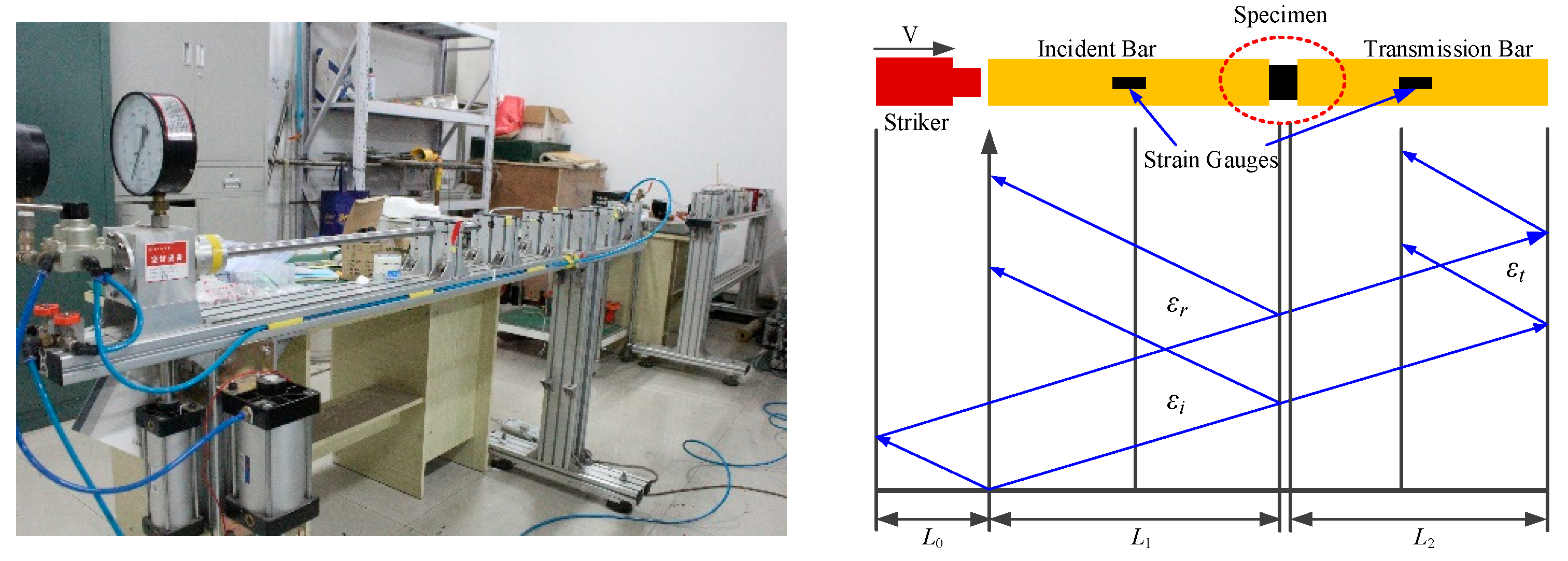
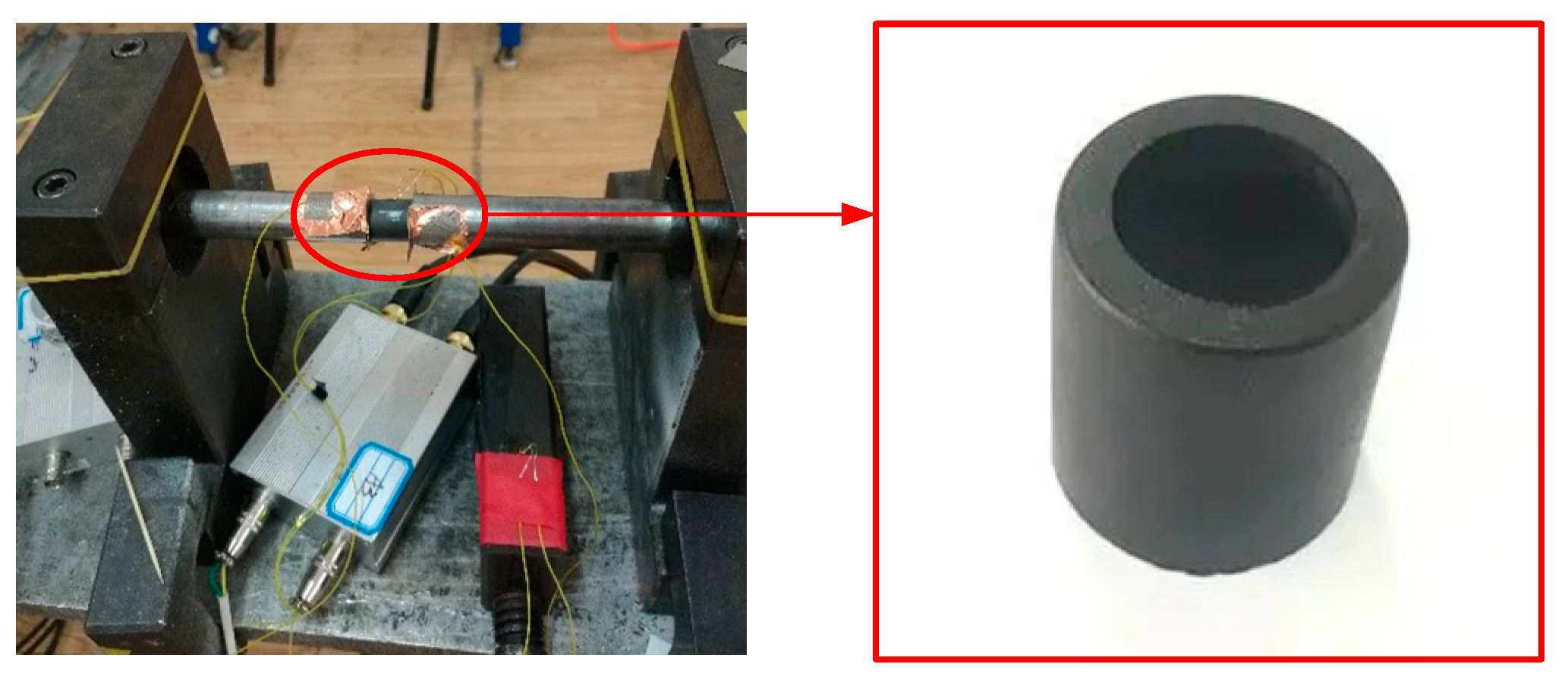

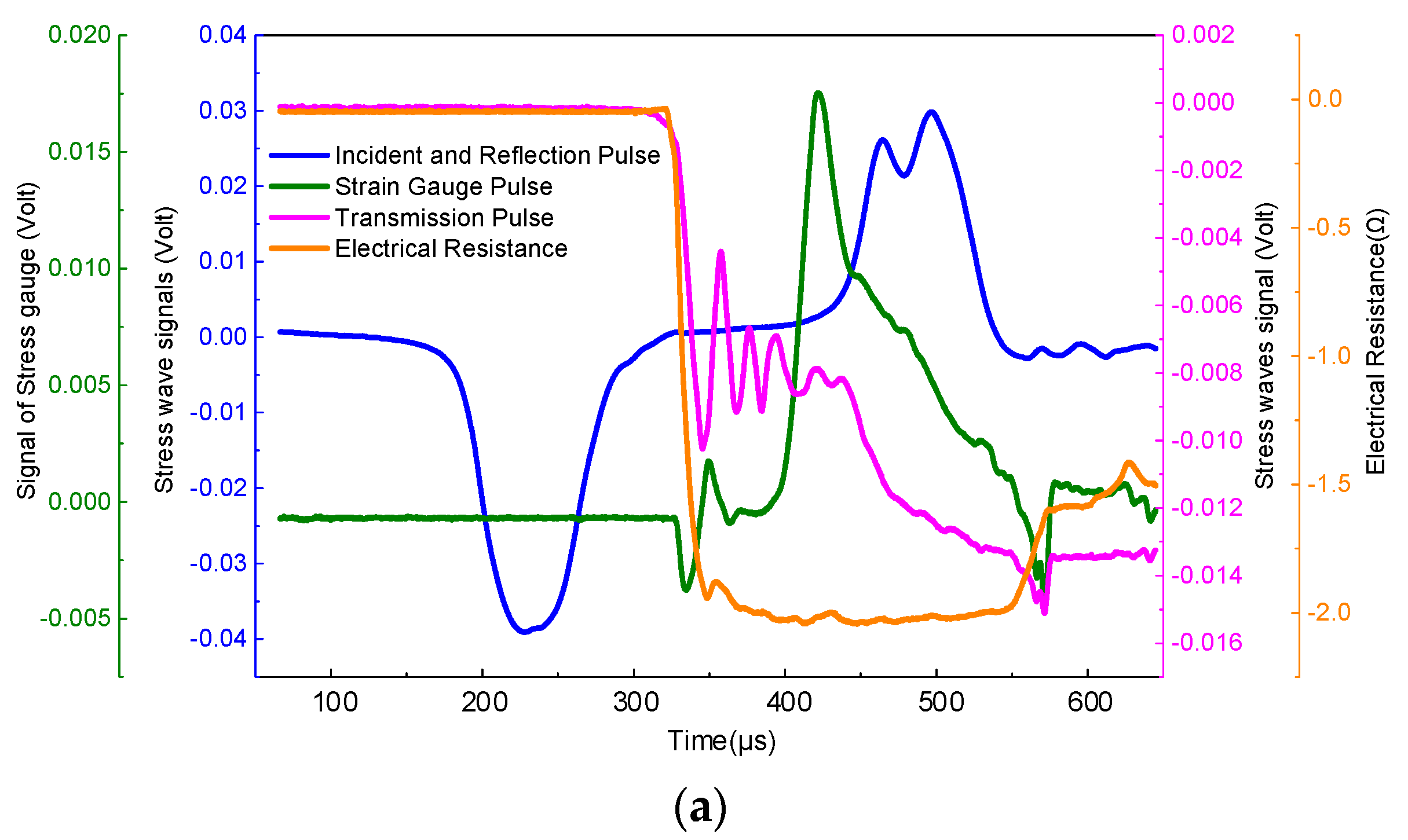
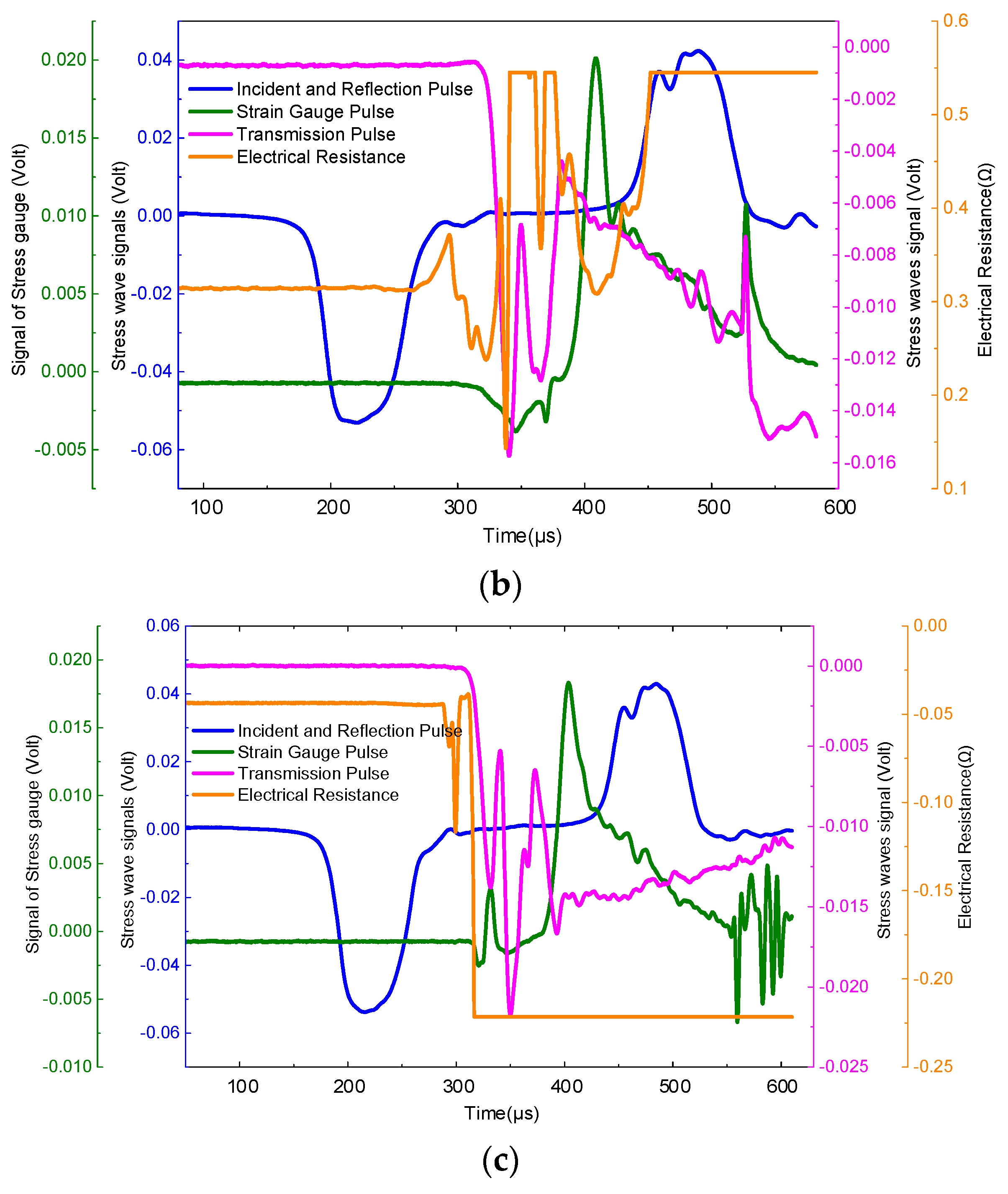
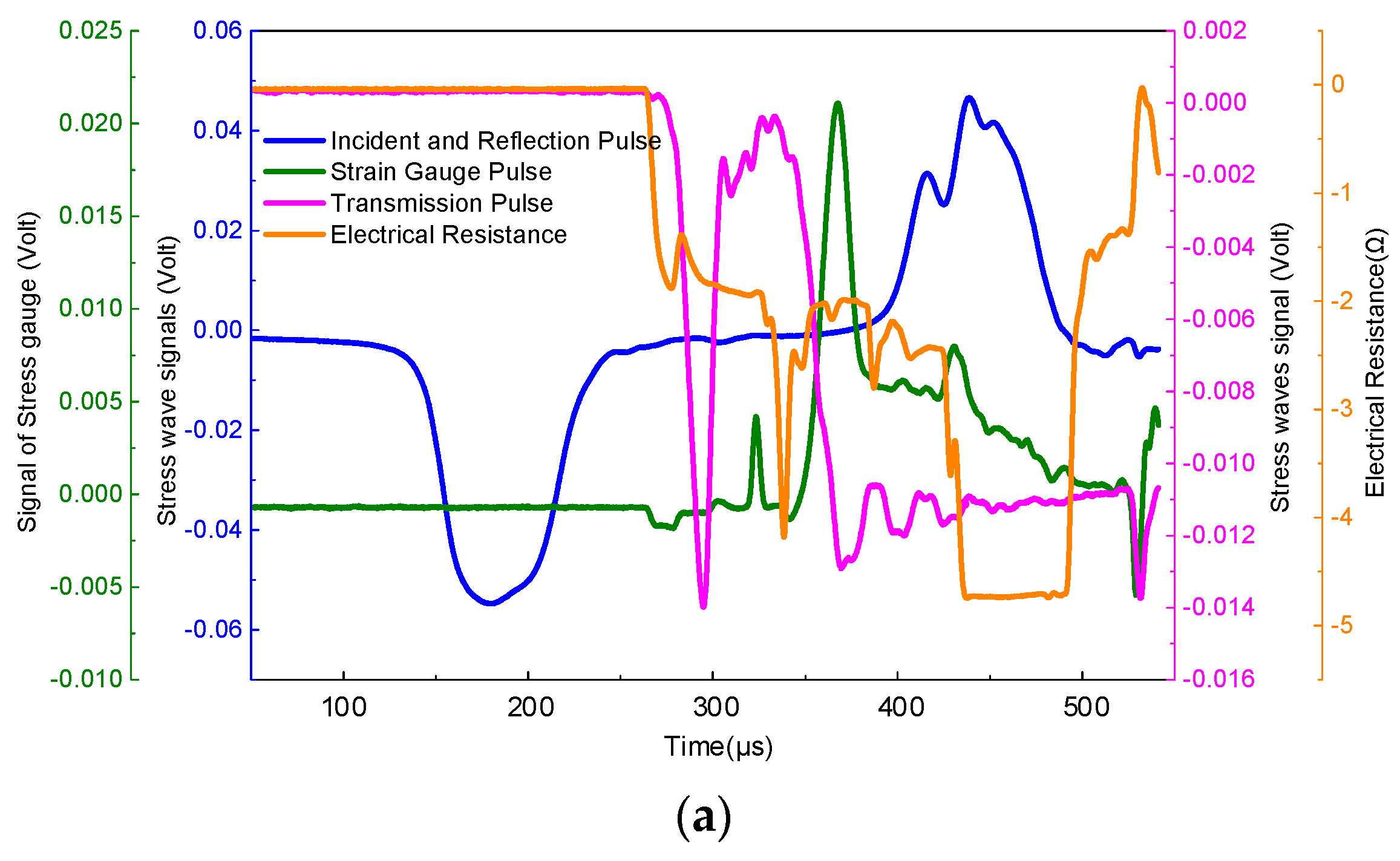
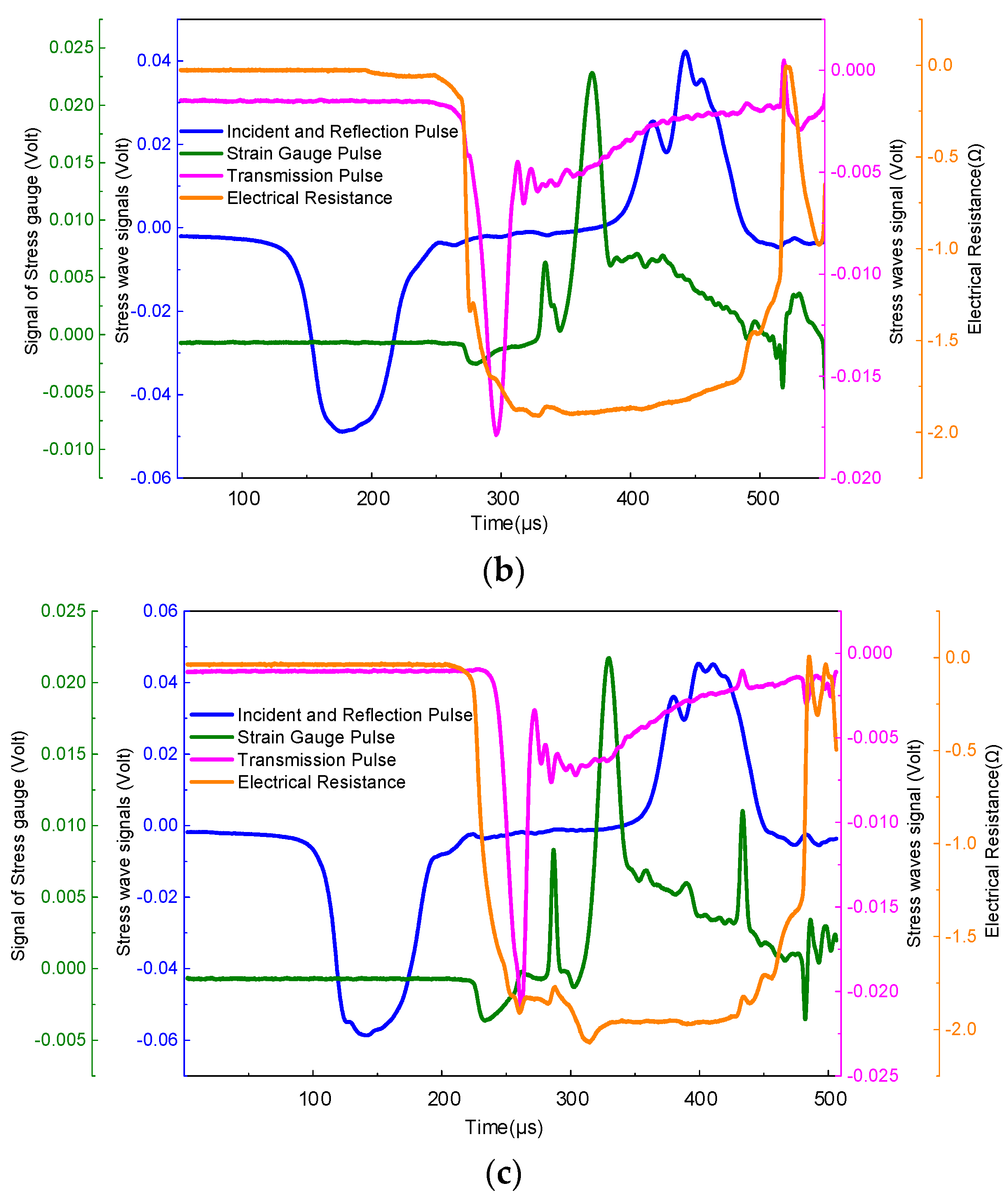


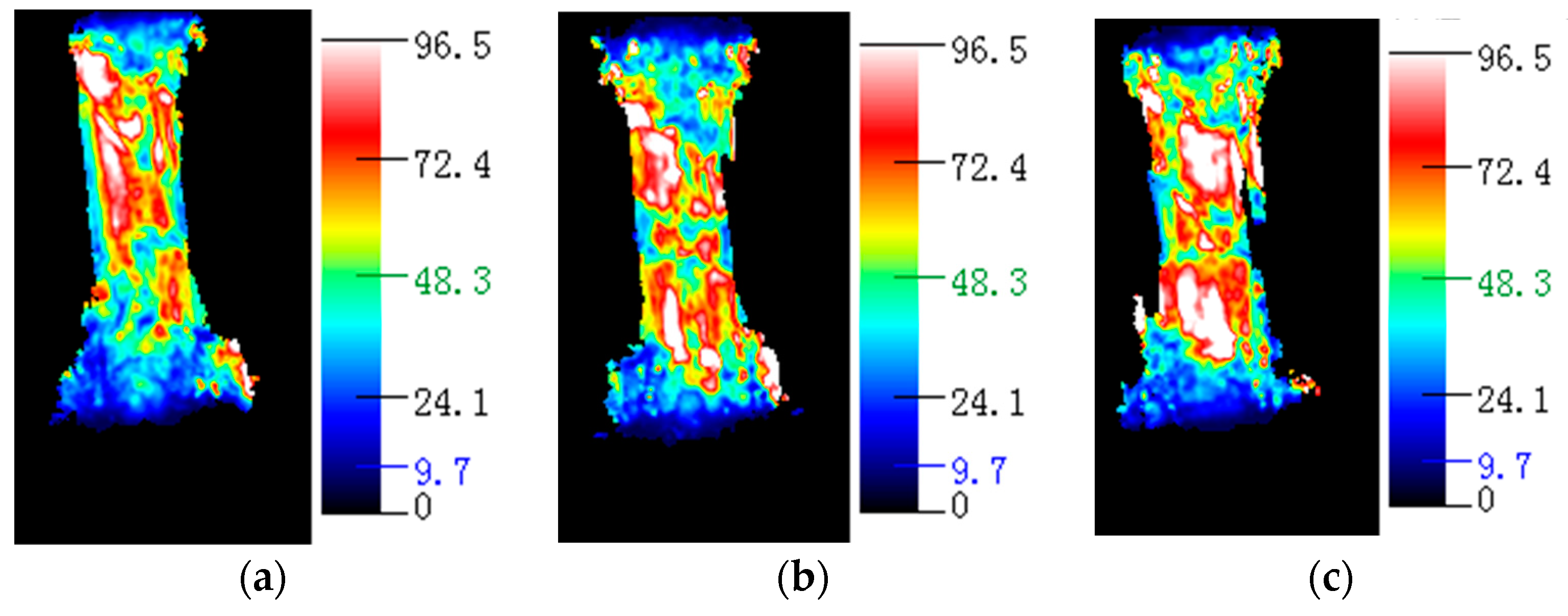
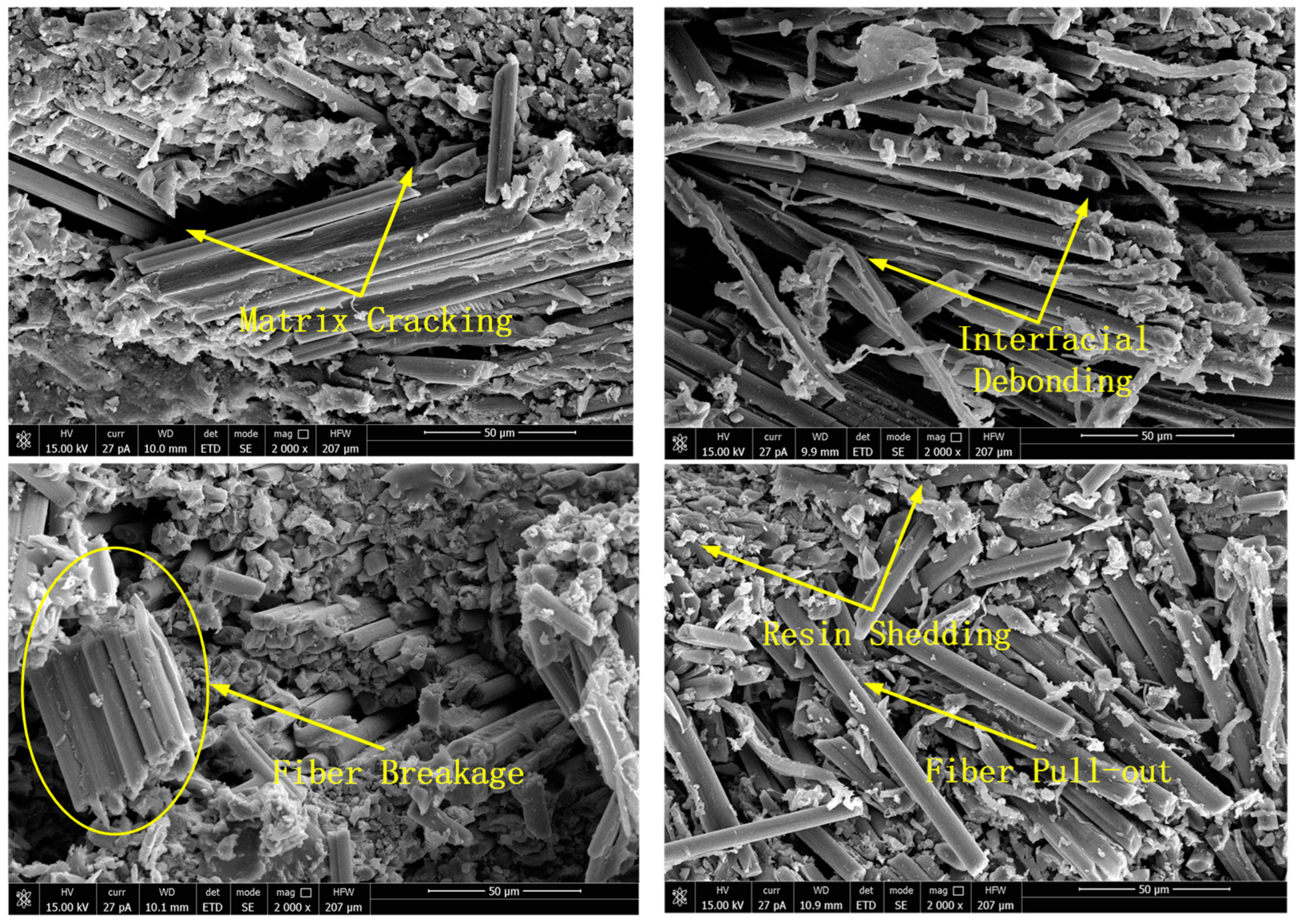

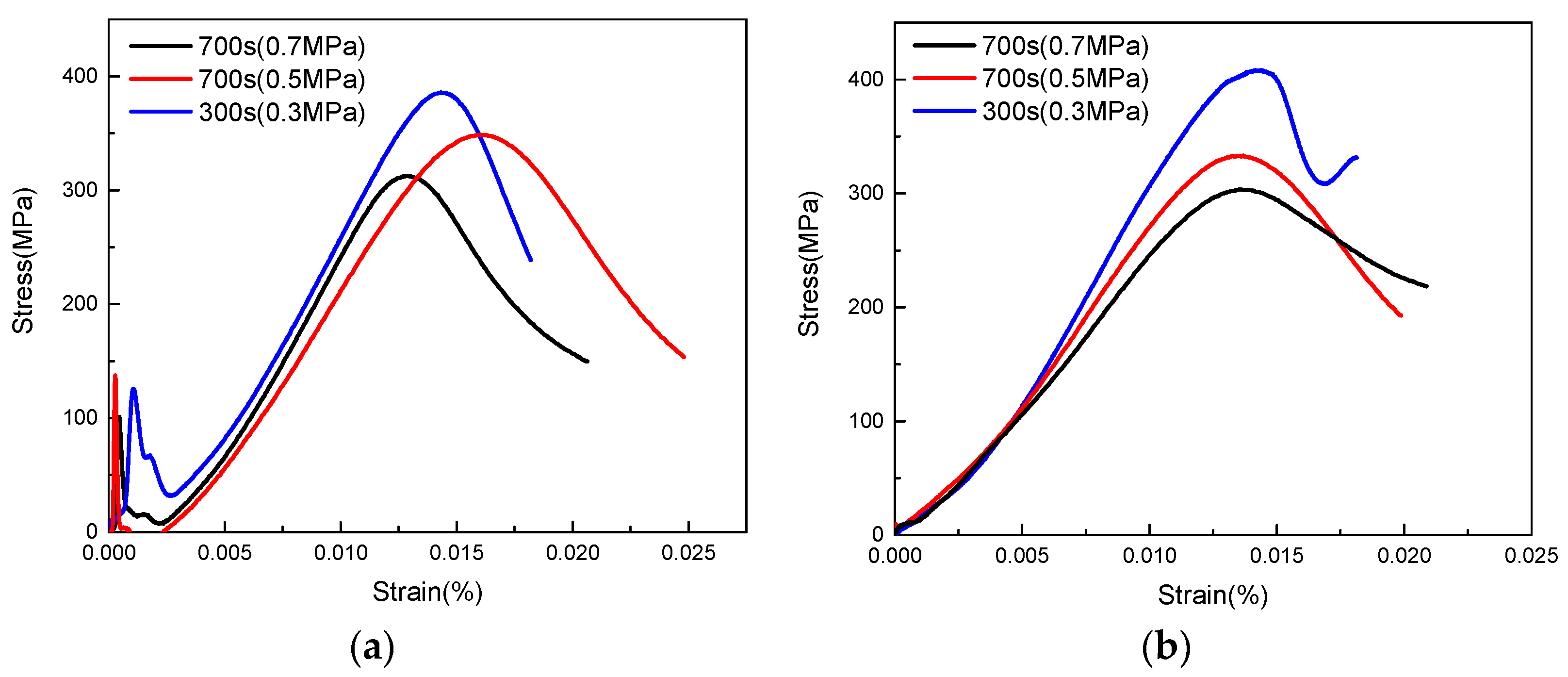
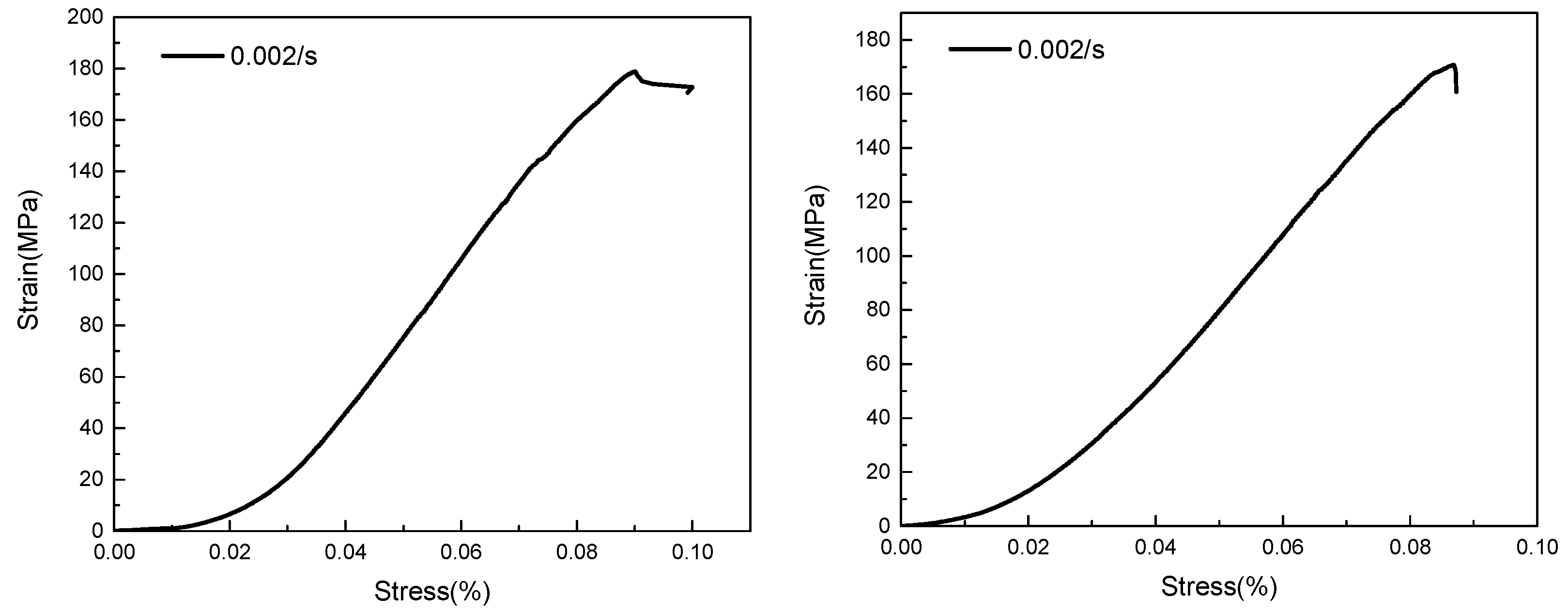
Disclaimer/Publisher’s Note: The statements, opinions and data contained in all publications are solely those of the individual author(s) and contributor(s) and not of MDPI and/or the editor(s). MDPI and/or the editor(s) disclaim responsibility for any injury to people or property resulting from any ideas, methods, instructions or products referred to in the content. |
© 2023 by the authors. Licensee MDPI, Basel, Switzerland. This article is an open access article distributed under the terms and conditions of the Creative Commons Attribution (CC BY) license (https://creativecommons.org/licenses/by/4.0/).
Share and Cite
Zhang, H.; Han, Y.; Ge, Y.; Sun, Z. Carbon Fiber Prepreg Composites Failure Mechanism Based on Electrical Resistance Method during Hight-Strain Rate Loading. Polymers 2023, 15, 484. https://doi.org/10.3390/polym15030484
Zhang H, Han Y, Ge Y, Sun Z. Carbon Fiber Prepreg Composites Failure Mechanism Based on Electrical Resistance Method during Hight-Strain Rate Loading. Polymers. 2023; 15(3):484. https://doi.org/10.3390/polym15030484
Chicago/Turabian StyleZhang, Hongji, Yang Han, Yuanyuan Ge, and Zhiyong Sun. 2023. "Carbon Fiber Prepreg Composites Failure Mechanism Based on Electrical Resistance Method during Hight-Strain Rate Loading" Polymers 15, no. 3: 484. https://doi.org/10.3390/polym15030484
APA StyleZhang, H., Han, Y., Ge, Y., & Sun, Z. (2023). Carbon Fiber Prepreg Composites Failure Mechanism Based on Electrical Resistance Method during Hight-Strain Rate Loading. Polymers, 15(3), 484. https://doi.org/10.3390/polym15030484





